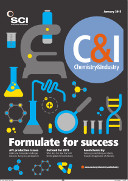Re-usable displays could reduce the need for both paper and inks, so a novel method to print text or pictures onto flexible re-writable surfaces looks promising. US chemists claim the ‘re-writable paper’ can be erased and written on more than 20 times with no significant loss in contrast or resolution, offering significant environmental and cost benefits.
The ‘paper’ currently takes the form of a glass or plastic film. The US-based team of chemists from the University of California, Riverside, made versions in blue, red and green, by using the commercial redox dyes methylene blue, neutral red and acid green, respectively (Nature Communications, 2014, 5, 5459). The dye also included a catalyst – titania nanocrystals – and a thickening agent, hydrogen cellulose (HEC).
Using a pre-printed mask to cover specific parts of the film allowed the researchers to control what was printed, from ordinary text to micrometre-sized patterns. After printing, they used UV light to photobleach the dye. This reduces the dye to a colourless state and leaves the printed text intact. ‘Printed letters remain legible with high resolution at ambient conditions for more than three days – long enough for practical applications such as reading newspapers,’ team leader Yadong Yin reports.
On heating, the reduced dye reacts with oxygen in the air to recover its original colour and the writing is erased. This process can take less than ten minutes when heating at 115°C. ‘Even for this kind of paper, heating to 115°C poses no problem,’ Yin said. ‘In conventional laser printers, paper is already heated to 200°C in order to get toner particles to bond to the paper surface.’
Yin’s lab is currently working on a paper version of the re-writable film. Other objectives are to increase the number of times the re-writable paper can be printed and erased, with a target of 100, to reduce overall cost; and to extend the legibility of the printed texts or images for more than three days. ‘We are exploring, too, the possibility of multi-colour printing,’ says Yin. ‘The design principle can be extended to various commercial redox dyes to produce re-writable paper capable of showing prints of different colours.’
‘This rewritable paper does not require additional inks for printing, making it both economically and environmentally viable,’ comments Yin. ‘It represents an attractive alternative to regular paper.’
The ability of titanium dioxide particles to reduce organic dyes under illumination is well established and photochromic materials based on this general concept have been developed already, points out Françisco Raymo of the University of Miami, US. ‘However, the application of this mechanism for reversible optical writing is novel and, in my opinion, extremely clever.’





